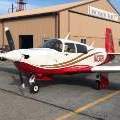What CHT requires cowl flaps in cruise?
-
Members Online
- bixmooney
- Oscar Avalle
- Greg Ellis
- mambrose
- DXB
- Justin Schmidt
- varlajo
- Tyler G
- hubcap
- dzeleski
- 1980Mooney
- Rocket_Driver
- MooneyModified
- Paul Thomas
- M20F
- MB65E
- flyfast
- 1967 427
- DRH4249
- Igor_U
- TCC
- StevenL757
- Bunti
- jetdriven
- Mscheuer
- KSMooniac
- Guy123
- kortopates
- 201Mooniac
- dkkim73
- MikeOH
- PT20J
- eman1200
- outermarker
- BradKratz
- Hank
- Bolter
- hammdo
- Mooney-Shiner
- robert7467


Recommended Posts
Join the conversation
You can post now and register later. If you have an account, sign in now to post with your account.